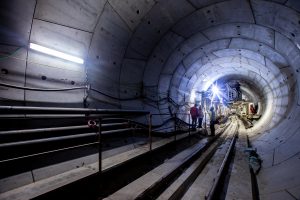 Webuild has completed the 65% acquisition of Astaldi creating a new Group with an order backlog of more than EUR 40 billion with more than 70,000 direct and indirect employees in 50 countries.
Webuild has completed the 65% acquisition of Astaldi creating a new Group with an order backlog of more than EUR 40 billion with more than 70,000 direct and indirect employees in 50 countries.
The transaction was completed by means of a capital increase by Astaldi equal to EUR 225 million in cash and reserved for Webuild. The proceeds raised will finance Astaldi as an ongoing concern and will also pay off privileged and pre-deductible creditors. Webuild financed its participation with cash raised from a capital increase in November 2019 that was entirely subscribed and paid-in by Salini Costruttori, CDP Equity, Banco BPM, Intesa Sanpaolo, UniCredit and other institutional investors.
The group to be created by the joining of Italy’s two biggest players in the infrastructure sector will have deeper roots in its home market, where it will play an important role in helping revive the sector in Italy and the world. In 2020, the group contributed to relaunching strategic projects worth more than EUR 3.6 billion, such as the Verona-Padua high-speed railway, the Ionian motorway and the railway hub in Genoa. With the acquisition, it will guarantee that work on strategic projects for clients and communities in Italy and abroad that involve Astaldi will continue, safeguarding jobs. These projects include Line 4 of the metro network in Milan, the Naples-Bari high-speed railway and the Hurontario light rail transit near Toronto.
In addition to giving the Webuild Group greater scale, the acquisition will bring together an array of innovative technical and engineering expertise, developed on nearly 100 work sites throughout the world.
It will expand the group’s geographic footprint to allow it to act quickly on the investment programmes promoted by national governments for large, strategic infrastructure projects and to contribute in the advancement of the Sustainable Development Goals (SDGs) set by the United Nations, and to the fight against climate change.
Through the acquisition of Astaldi, the group will be specialised in large construction areas such as sustainable mobility (60%), clean hydro energy (21%), clean water (4%), green buildings (3%) and other (12%).
Share on:



